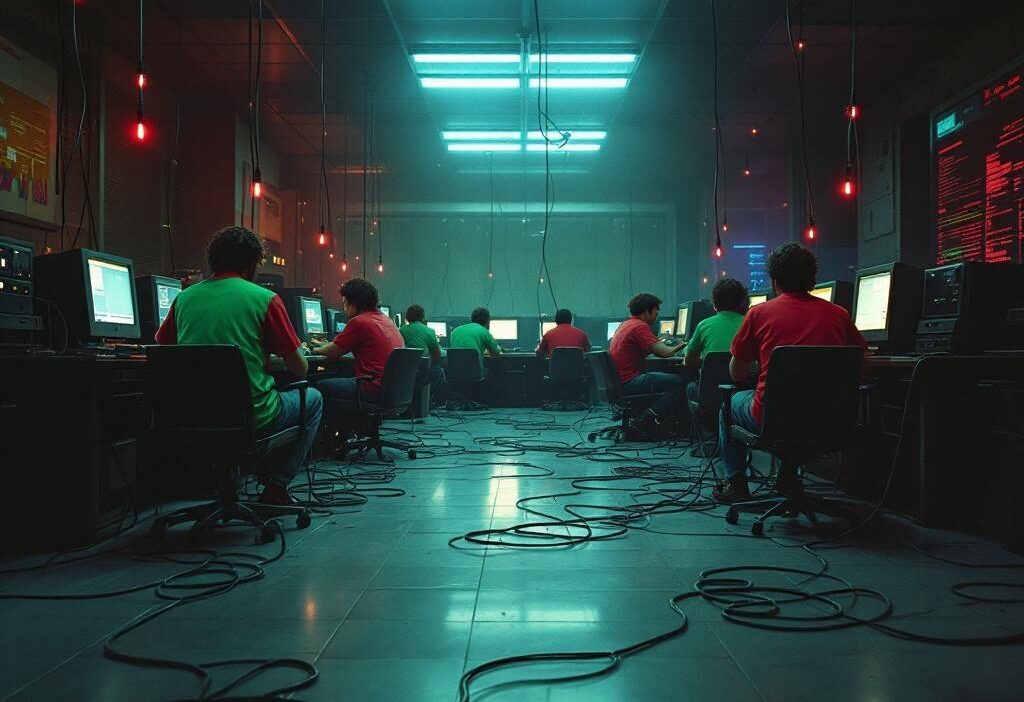The O(n) Club: Possible Bipartition — Or, How to Split Your Frenemies into Two Drama-Free Camps
⚡ TL;DR
Split n people into two teams, so no sworn enemies end up on the same side—a classic case of coloring a graph and hoping you don’t see a triangle. The quick and dirty with Java:
// Color graph with DFS int[] color = new int[n + 1]; for (int i = 1; i <= n; i++) { if (color[i] == 0 && !dfs(graph, color, i, 1)) return false; } return true;
🧠 How Devs Usually Mess This Up
Ah, the classics:
🔍 What’s Actually Going On
This is the anti-drama club algorithm: People are nodes, dislikes are edgy edges. If you can pick two colors so neighbors never clash, congrats: your graph (and friend group) is bipartite and peace reigns (for now).
When you (literally) can’t, it’s probably thanks to an odd-length cycle—think three folks with mutual beef. That’s a triangle of doom that breaks two-color harmony.
🛠️ PseudoCode
- Step 1: Build the adjacency list. Dislike is mutual, so add both ways.
for each [a, b] in dislikes: graph[a].add(b); graph[b].add(a);No silent beef—everyone’s angst gets shared equally.
- Step 2: Create a color array for people (0 for unpainted, 1/-1 for club t-shirts).
int[] color = new int[n + 1];Yup, index from 1 to match the people labels. Nobody likes an off-by-one bug at a party.
- Step 3: For every uncolored soul, paint with DFS.
boolean dfs(int node, int paint) { color[node] = paint; for (int neighbor : graph[node]) { if (color[neighbor] == 0) { if (!dfs(neighbor, -paint)) return false; } else if (color[neighbor] == paint) { return false; } } return true; }If you clash colors with a neighbor—run for the hills (or just return false, whatever works).
- Step 4: Check every node because cliques can be sneaky.
for (int i = 1; i <= n; i++) { if (color[i] == 0 && !dfs(i, 1)) return false; }Nobody gets left uncolored, not even the quiet ones.
💻 The Code
public boolean possibleBipartition(int n, int[][] dislikes) {
List<Integer>[] graph = new ArrayList[n + 1];
for (int i = 1; i <= n; i++) graph[i] = new ArrayList<>();
for (int[] pair : dislikes) {
graph[pair[0]].add(pair[1]);
graph[pair[1]].add(pair[0]);
}
int[] color = new int[n + 1];
for (int i = 1; i <= n; i++) {
if (color[i] == 0 && !dfs(graph, color, i, 1)) return false;
}
return true;
}
private boolean dfs(List<Integer>[] graph, int[] color, int node, int paint) {
color[node] = paint;
for (int neighbor : graph[node]) {
if (color[neighbor] == 0) {
if (!dfs(graph, color, neighbor, -paint)) return false;
} else if (color[neighbor] == paint) {
return false;
}
}
return true;
}
⚠️ Pitfalls, Traps & Runtime Smacks
- Watch out for odd cycles—like a feuding trio. You can’t split them with only two sides.
- Your graph might be many islands (a.k.a. groups)—check them all or miss the introverts’ problems.
- Mind the indexes! Use n+1 for 1-based nodes or you’ll paint outside the lines (and your heap).
- O(n + e) and that’s it. Space and time—with DFS, code and coffee survive the largest drama club.
🧠 Interviewer Brain-Tattoo
“If your haters form an odd cycle, toss the paint brush and just split snacks instead.”































































































































































































































































































































